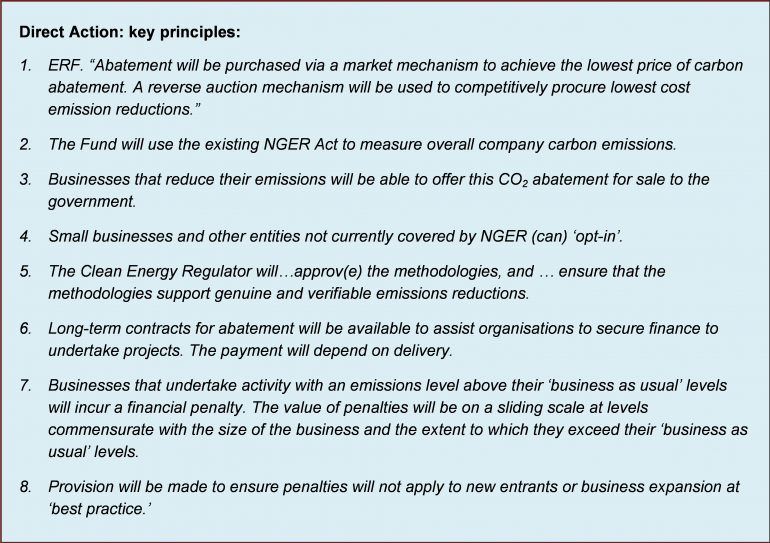Less talk, more action
The failure of successive governments to achieve bipartisan agreement on a mechanism to reduce national greenhouse emissions has created a risk management issue for Australian business - especially for our largest energy producers and users. And if there’s one message we’ve heard consistently from business; it is the need for certainty in climate policy.
With the change in government and the planned repeal of the Clean Energy legislative package, we begin the task over of developing a new climate change policy framework in the form of Direct Action. Written in 2010, Direct Action exists essentially as a set of principles – some of which appear problematic and, at times, contradictory. It has been called the “do nothing” policy option. It could be, but now business has the opportunity to ensure that it is meaningful, equitable and positions Australia for future prosperity. And a ‘do nothing’ scheme benefits no one. There is no certainty in this option, as Australia’s international obligations will eventually require action to reduce emissions.

In a series of articles to be published over the next few days, Energetics will summarise the views of businesses on the Fund and outline a number of the challenges that the designers of the Emissions Reduction Fund (ERF) must address. From the feedback, other evidence and our own analysis we will present a scheme that aligns with the principles of Direct Action and at the same time lays a foundation for a national response to climate change that offers certainty and equity.
What does business want from an Emissions Reduction Fund?
Both before and after the Federal election, Energetics sought the views of the business community on the features of the Emissions Reduction Fund that would make it workable and acceptable. Some of the findings included:
- A bias towards achieving equity rather than simplicity
- Strong support for the protection of international competitiveness
- An acceptance of the need for penalties for exceeding a fair baseline
- A clear desire for a market based mechanism
In addressing these questions, any businesses intending to make a submission to the ERF consultation should consider the role of emissions baselines, how any penalties will be set, the rules that ensure the scheme is equitable and the approaches that should be used to qualify potential abatement projects.
Ironing out the contradictions
We’ve also heard concern expressed about how the proposed reverse auction would work in the ERF. There are three major risks that need to be addressed, and provide an example of some of the design complexities facing the Department of Environment:
- “additionality” - the requirement that the abatement project is beyond business-as-usual. In the absence of support from the ERF, the project does not meet investment benchmarks.
- participation – voluntary vs compulsory whilst being equitable
- delivery in a simple and robust manner
Trying to manage all three elements concurrently will be a balancing act. On the one hand, the Department may choose to undertake stringent verification of a methodology and an assessment of the associated credit risks before the auction process begins for an abatement project. This will minimise the risk of future non-delivery of abatement and ensures that the principle of additionality is workable. However, if the process is overly complicated and costly, it may deter participation. So we may see the Department may opt for a “light touch” verification prior to allowing a methodology into the auction process. This will encourage participation, but increase the risk of gaming and potentially delivery which in turn impacts Australia’s ability to meet our 5% emissions reduction target using domestic abatement.
Australia’s largest energy users and emitters have been tracking, managing and reporting their greenhouse emissions for years. Leading companies have developed national energy efficiency programs, invested in greenhouse mitigation technologies and increasingly, renewable energy options. Now is the time for businesses to step up and bring their knowledge and experience to comment on the Emission Reduction Fund’s design complexities such as the reverse auction challenge outlined. Business needs to bring their experience to bear and ensure that Australia is positioned for a prosperous future.
In the second article, we will further discuss the views of the business community and the other design questions that need to be addressed.
Emma Fagan is a Consultant and Dr Peter Holt and Gordon Weiss are both principal consultants with Energetics.
















